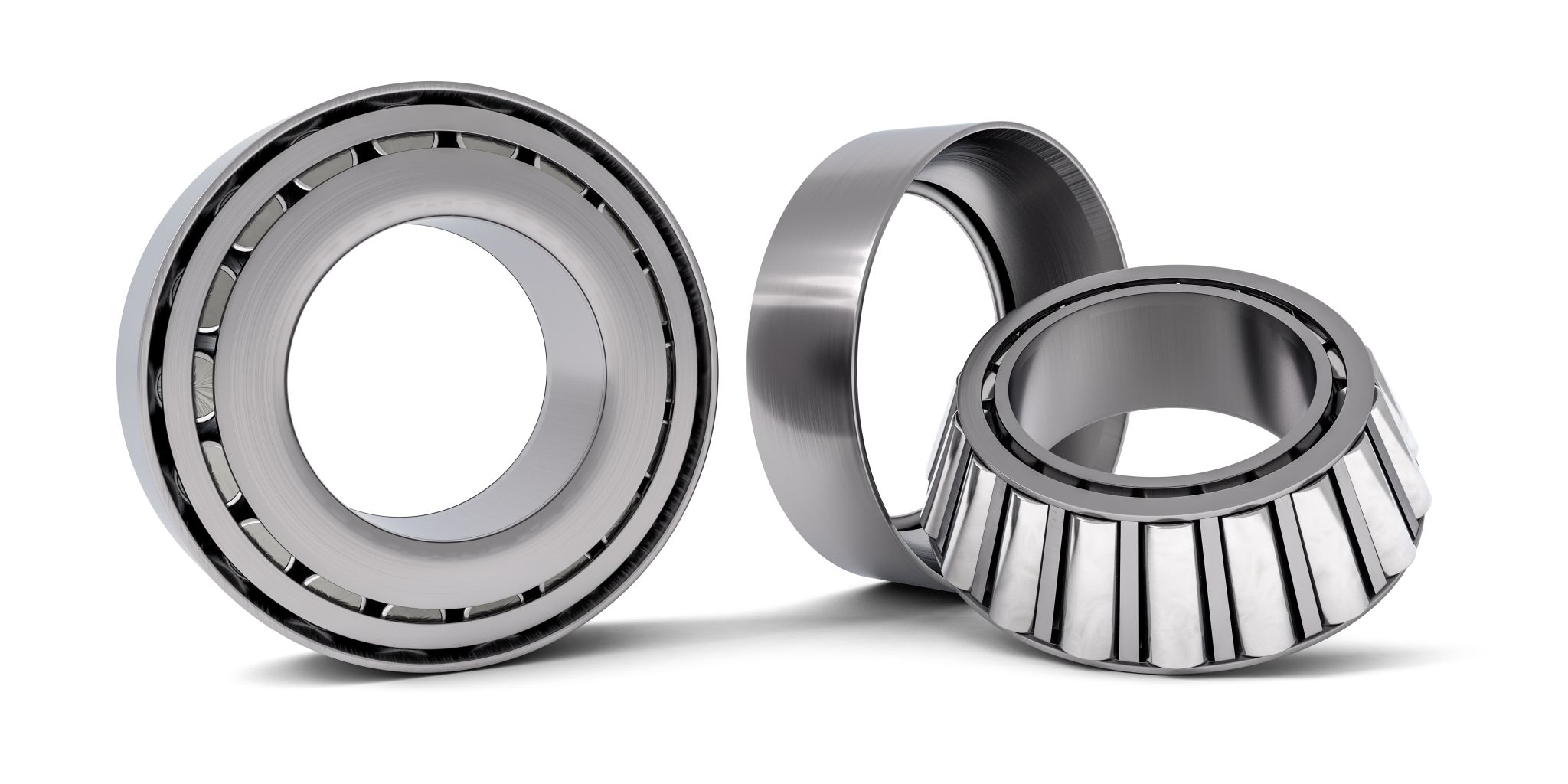What Are Tapered Roller Bearings?
A key element of machinery designed for heavy duty applications, the tapered roller bearing consists of a cone (inner ring), a cup (outer ring), rollers, and a cage. The rollers are tapered in the shape of truncated cones, and both the inner and outer ring raceways are tapered to accommodate the shape of the rollers.
The projection of the raceway and roller apices all meet at a common point on the main axis of the bearing. This conical geometry provides true coaxial rotation, which prevents sliding motion between the raceways and the rollers and thus reduces component wear and fatigue.
Tapered roller bearings can support both radial and axial loads, whereas other bearing types are designed to carry primarily one type of load. Whether the load on the bearing is radial, axial, or a combination of both, the taper design induces a resultant force that pushes the rollers up the taper towards the flange, or rib, of the cone. This force seats the rollers against the flange and maintains roller alignment. Engineers commonly design systems using tapered roller bearings in opposing pairs, so that axial forces are supported equally in both directions.
Another advantage of tapered roller bearings is adjustable clearance. The cup and cone assembly are separable, thus allowing for the creation of end play (axial clearance) or preload (axial interference) by moving the cup or cone axially during installation. In many applications, a slight preload will maximize bearing performance and life. However, a word of caution: excessive preload can drastically reduce bearing life, or generate high temperatures that can quickly lead to bearing failure.
A third advantage of tapered roller bearings is the ability to support higher load-carrying capacities when compared to ball bearings of the same size. Line contact between each roller and raceways provide a wider weight-bearing surface than the point contact of a ball – so for an identical load capacity, a tapered roller bearing will be smaller in size than a ball bearing.
Despite the benefits provided by tapered roller bearings, disadvantages do exist. These bearings have speed limitations and are very sensitive to misalignment, so engineers should consider other types of bearings for applications with high misalignment or high-speed requirements.
Tapered roller bearings are commonly used for moderate speed, heavy duty applications with multi-directional loading. Examples include gearboxes, differentials, wheel hubs, and railroad axles, as well as agricultural, construction, and mining equipment.

Complete tapered roller bearing assembly (left) and separable cup and cone assembly (right).

